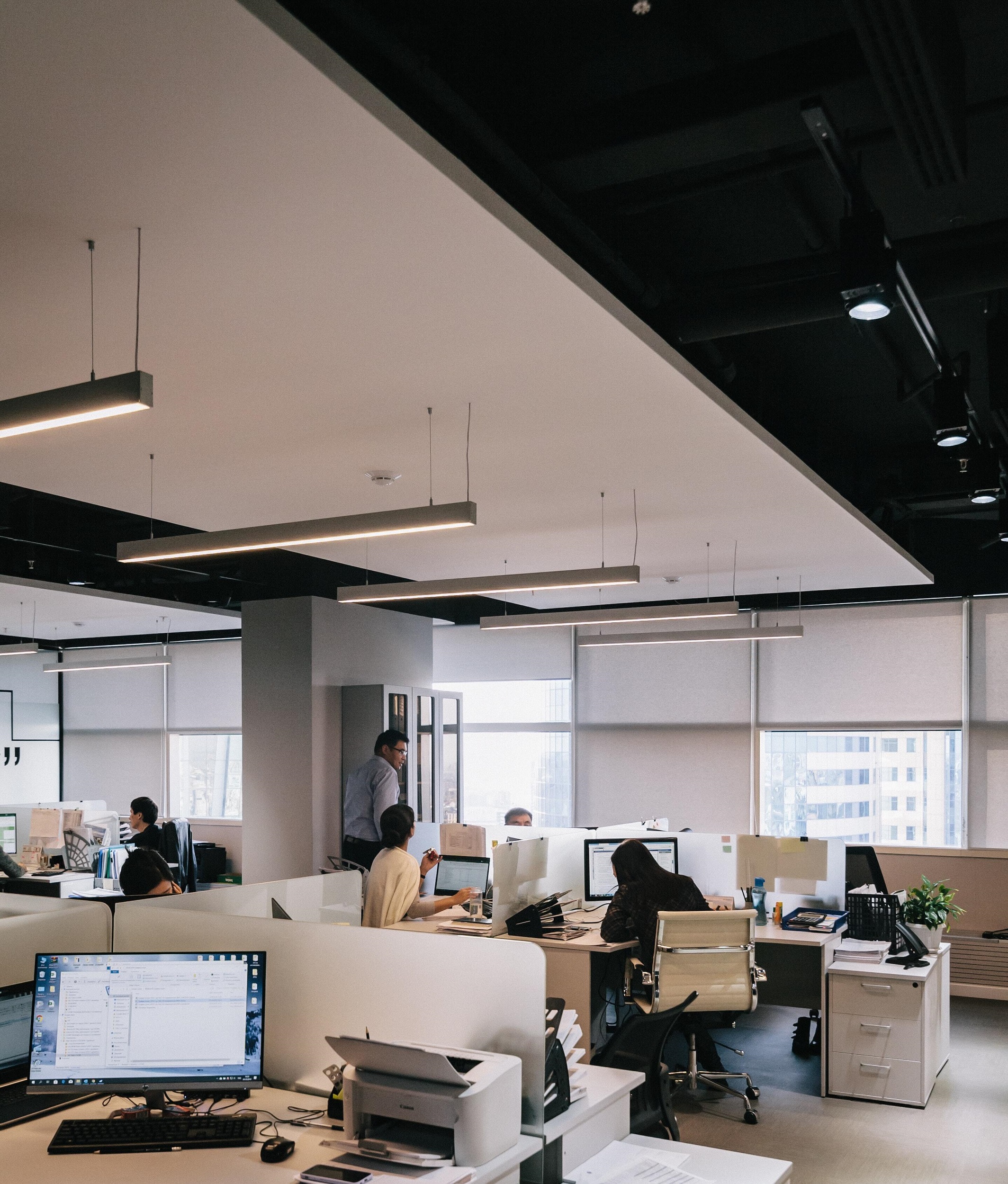This post is the second in a two-part mini-series on understanding Workplace Choice and Designing for it.
In our previous post we examined why it pays to provide employees with workplace choice. It empowers and engages them, which results in higher performance and business success.
However, creating true choice in the workplace requires more than just building multiple spaces within an office. Changes in a workplace layout must be supported with strong leadership and company culture. Technology and ergonomic design considerations also ensure that choices are real and practical.
Fitting Company Culture

(Photographer: Dianna Snape)
Workplace choice must be compatible with a company’s culture, otherwise even in areas where choice is provided, employees can revert back to old habits. John Vaholak of VOA Associates has documented his experience with situations like this. Despite an org. structure and culture that would not support it, a client insisted on an open and choice filled workplace. Against John’s guidance, the CEO was adamant on the open plan. The results were poor due to the lack of a supporting culture. John describes the outcome:
The results were gruesome. The centrally located huddle rooms and glass-enclosed spaces were conquered and declared occupied territory, which was claimed and camped out in permanently.
It’s clear that workspaces alone can’t create an empowered company culture. However, workspaces can support empowerment through choice. Further, where a strong culture exists, adding choice can help strengthen it.
Rapidly growing Canadian tech firm Influitive is a great example. They provide employees with choice in where they work. Habits are reinforced by encouraging employees to use spaces like the large cafeteria to interact with one another. This is done by ordering team lunches 3 times a week. Their workplace and work schedule is also set up to offer ultimate flexibility – providing employees with the choice of how they want to organize their lives.
Leadership

(Photographer: Dianna Snape)
Workplace choice is truly only available when employees feel comfortable utilizing the different workspaces in the office
Good leaders are aware of employee concerns and communicate how changes will affect them. With workplace choice, leaders must address concerns that stop employees from using certain spaces.
Employees want to see leadership address these issues as well. 74% of Millennials report wanting the ability to work flexibly without a stigma attached from colleagues and superiors. Accordingly, those in senior roles must lead by example in new spaces to show employees that utilizing different areas is OK.
A great example is HOK’s remodeled Toronto office. A focal point of the space is a large table and meeting room area right at reception were not used until the principles took notice and action. Managing Principle, Duncan Broyd states that it wasn’t until him and other execs started using the front meeting room, that others were validated that it was OK. It worked, as he notes “We’re past that point now. Everyone knows it’s fair game.”
Technology and Ergonomic Considerations

(Photographer: Dianna Snape)
In terms of functional design of spaces, there are features that designers and Facility Managers can incorporate to make true workplace choice possible for employees.
Work is increasingly mobile and employees now consider workplace technology as a factor when choosing what company to work for. The spaces you design should serve a purpose. We recently spoke with CBRE’s Managing Director of Workplace Strategy, Lisa Fulford-Roy who explained that technology should be considered in all spaces unless the space has been explicitly defined as a non-work zone.
Ergonomics
Collaborative areas and couches are a great feature for meetings but what about the ergonomic considerations for using technology in these spaces? For example, using a laptop on a coffee table from a couch does not support good posture. Neither does cramming your neck while sending an email from a beanbag chair. Consider how these ergonomic features affect an employee’s choice in using the room. It’s not practical or comfortable to use a laptop in some scenarios, effectively eliminating the option of using that room.
Technology
Lack of technology in a space can inhibit an employee’s ability to use it. Access to power enables mobility, lack of it inhibits it. Additionally, concerns like screen availability or booking room software will limit the functional use of any space. For example, if a presentation needs to be made and the capacity is not there, use is limited. Similarly, if employees have an issue securing a room with a booking system, a deterrent to choice is created. These are both examples that limit an employee’s choice in using different spaces within an office.
To address this, it’s best to interview employees to get feedback on what they actually need and desire in a space. This information will play a valuable role in creating spaces that match and have the capacity to accommodate the way people work. These more functional and desired workspaces will provide true and meaningful choice.
All images courtesy of Dianna Snape. They feature Transurban’s Australian headquarters, designed by Hassell. It was shortlisted for IDEA’s 2016 Awards.



